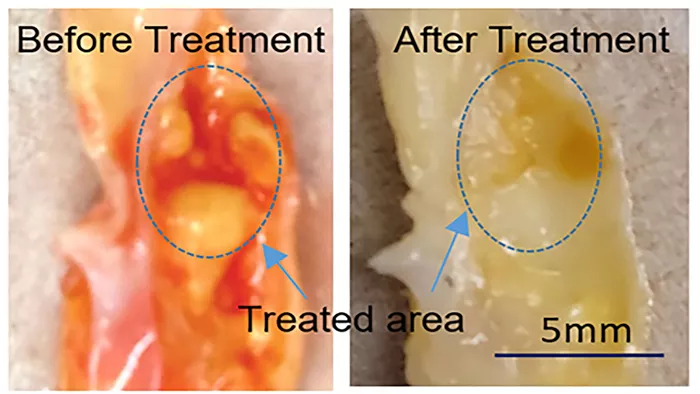Laser is one of the tools for doctors to solve plaque accumulation on the arterial wall, but the current method has the risk of complications and the effect is limited* Scientists at the University of Kansas demonstrated this new treatment by introducing ultrasound. It relies on exploding microbubbles to destroy plaque * with greater safety and efficiency, while suggesting some unique long-term advantages.
This new ultrasound-assisted laser technology is based on the so-called laser angioplasty, which aims to improve the blood flow of patients whose arteries narrow due to plaque accumulation. More traditional treatments such as stents and balloon angioplasty expand arteries and compress plaques, while laser angioplasty destroys plaques to eliminate blockages.

The laser is inserted into the artery through the catheter, and the heat generated by it turns the water in the artery into a bubble, causing the plaque to expand, collapse and rupture. Because this technology requires high-power lasers, it may perforate or dissect arteries, which scientists hope to avoid by using low-power lasers.
With the help of ultrasound, they were able to do this in pig belly samples and in vitro samples of arterial plaque. The method uses a low-power nanosecond pulsed laser to generate microbubbles, and then applies ultrasound to the artery to expand, collapse and destroy the plaque.
Team member Rohit Singh said: "in traditional laser angioplasty, the whole cavitation process requires high laser power, while in our technology, only low laser power is required to start the cavitation process. In general, the combination of ultrasound and laser reduces the demand for laser power and improves the efficiency of removing atherosclerotic plaque."
The combination of laser and ultrasound has shown potential in other areas of medicine, and Singh and his colleagues are looking for similar therapies to solve the abnormal microvessels and blood clots in veins that lead to blindness in the eye. We also see that ultrasound is used to detonate tiny bubbles in cancer research, providing a way to eliminate cancer cells in tumors.
Because it destroys rather than compresses plaques, scientists say the technique should have a lower risk of restenosis after treatment than balloon angioplasty and stenting. They are now planning in vivo experiments and point out that laser and ultrasound technologies have been widely used by clinicians, which should simplify their potential clinical use path.
The study will be presented this week at the 182nd meeting of the American acoustic society in Denver.